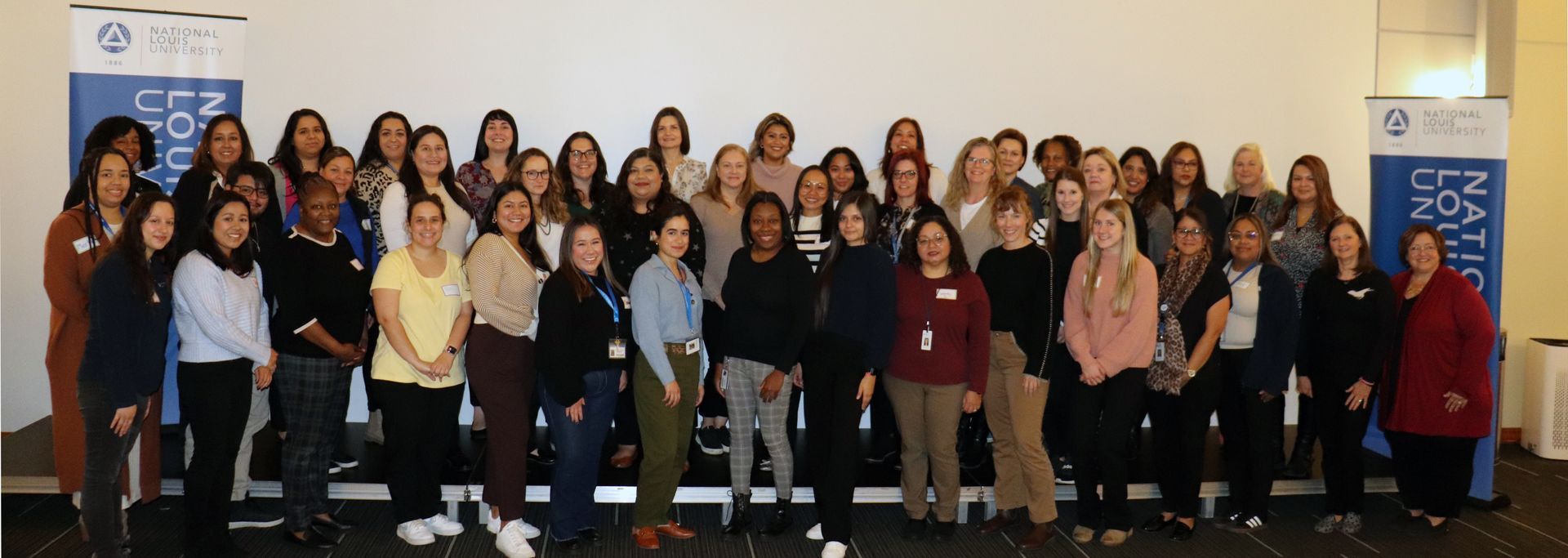BY Wendy Connell, M.Ed. | November 14, 2024
This document may be printed, photocopied, and disseminated freely with attribution. All content is the property of the McCormick Center for Early Childhood Leadership.
For early childhood program administrators, a lot of the work involves balancing the demands of leadership, communication, and conflict resolution while fostering a supportive environment for staff and children alike. However, the nature of this work can often leave directors feeling isolated, without sufficient opportunities to connect with peers and share experiences. This is where a Community of Practice (CoP)—a collaborative network of professionals who share common goals and challenges—can offer powerful support.
A Community of Practice (CoP) is a group of individuals who share a common interest or passion and work together to learn from one another, solve problems, and deepen their knowledge in a particular domain. The term, coined by Jean Lave and Etienne Wenger in the early 1990s, originated from the idea that learning is inherently social. CoPs are built on the principle that ongoing, collaborative learning within a community leads to personal and collective growth.
In my work with a cohort of early childhood administrators involved in the Smart Start Quality Support program in Illinois, I’ve been integrating using online modules as part of our job-embedded professional development. I began the practice with this group in 2022. Everyone independently watched a portion of a module each month, completed the activities, and then met in the Community of Practice to discuss and learn together. The following month, they applied what they had learned and discussed it with their staff. Currently, we are using the online module Communication in the Workplace: Crafting Connections, Managing Meetings, and Resolving Rifts as part of our job-embedded professional development in our Community of Practice. This module offers practical strategies that directors can immediately apply to their work while creating a shared learning experience.
JOB-EMBEDDED PROFESSIONAL DEVELOPMENT: LEARNING WHILE LEADING
Directors are responsible for creating and leading teams, managing programs, and ensuring high-quality care, so meaningful professional development often takes a backseat. The pressure of daily responsibilities, combined with the isolation that can come from working in a leadership role, makes it difficult for administrators to find the time or space to reflect and grow. This is particularly true for directors working in settings where they may have limited opportunities for collaboration with other leaders.
One of the major benefits of incorporating a Community of Practice (CoP) into professional development is that it provides directors with a supportive, collaborative environment. As part of a CoP, directors have access to shared learning experiences and a safe space to discuss challenges, exchange insights, and offer support. This collaborative model combats isolation and ensures that professional development is rooted in real-world practice—allowing directors to bring what they learn directly into their leadership roles.
In our cohort, this sense of connection has been invaluable. The cohort’s directors have been able to discuss their experiences, share strategies, and troubleshoot common challenges. For example, after working through the first section of the module, “Communication Styles at Work,” directors took the communication styles survey. In small groups, they reflected on how their communication styles align or differ from those of their staff. This dialogue sparked discussions about improving communication in their unique settings and led to a greater sense of shared understanding among the group.
MODULE OVERVIEW: A SHARED LEARNING EXPERIENCE
The Communication in the Workplace module is designed to provide directors with tools and strategies that are both practical and immediately applicable to their roles. The module is divided into three sections:
1. Communication Styles at Work
This section introduces an assessment tool that allows directors to examine their communication styles and understand how their styles interact with those of their staff. By understanding the dynamics of communication styles, directors can better navigate daily interactions and improve team relationships.
2. Meeting Practices that Foster Communication
Meetings are a critical tool for fostering collaboration, yet many directors struggle with making them engaging and productive. This section of the module offers strategies for conducting meetings that not only clarify goals and share information but also promote team cohesion and involvement. Directors in my cohort have found these strategies particularly valuable as they look to improve their staff meetings and ensure that all voices are heard. They are working on turning their meetings from “reviewing the rules…again, and information sharing” to a time for shared decision-making and staff involvement.
3. Conflict Resolution Strategies
Conflict, whether task-related or interpersonal, is inevitable in any team. This section of the module focuses on transforming conflict from a negative force into a productive one. Directors learn techniques for addressing both task conflicts (disagreements about procedures or decisions) and relationship conflicts (interpersonal issues). These strategies are essential for maintaining a positive work culture and ensuring that conflicts are resolved in ways that lead to growth and understanding.
JOB-EMBEDDED LEARNING IN ACTION
A key component of this professional development approach is that it is job-embedded, meaning that the learning is directly tied to the directors’ day-to-day responsibilities. Unlike traditional professional development that may feel disconnected from real-world work, this module is designed to be immediately actionable. Directors complete the module’s sections and then apply what they’ve learned in their work settings, reflecting on their experiences during group discussions.
For example, after completing the section “Meeting Practices that Foster Communication,” directors in our group shared how they applied strategies for more inclusive meetings. One director introduced a “round-robin” style of sharing, where every staff member has a chance to contribute, which led to more productive meetings and a greater sense of team cohesion. Another shared how she is developing a team to help plan the meetings and create more inclusive agendas. These real-world applications solidify the learning and enhance the collaborative experience within the CoP. The directors are learning from the module—and they are learning from each other’s successes and challenges.
This job-embedded, collaborative approach is an effective way to create sustained professional growth. Directors are learning new strategies and refining their leadership practices in real-time, directly impacting their teams.
THE BENEFITS OF COLLABORATION AND SHARED LEADERSHIP
In addition to enhancing communication and conflict resolution skills, the collaborative nature of a CoP helps alleviate the isolation that many directors experience. By working together in a supportive, non-judgmental space, directors can share their challenges and brainstorm solutions collectively. This creates a sense of camaraderie and encourages a culture of shared leadership.
Through our CoP, directors have learned they are not alone in their difficulties. Whether navigating tough conversations with staff or managing staff burnout, these shared experiences have made it easier for directors to problem-solve together and support one another through challenges.
Working within a CoP provides an ongoing source of encouragement and accountability. By checking in with one another, sharing progress, and celebrating wins, directors remain motivated to apply what they’re learning in meaningful ways. This sustained, collective approach to learning leads to deeper professional growth and stronger leadership practices across the group.
Whether you are a coach who works with center directors or a coach or leader who works with teachers, you can implement this professional development strategy with your community or team.
IDEAS TO CONSIDER
For early childhood directors, professional development is most impactful when it is connected to the realities of their work. The module “Communication in the Workplace” is just one of many modules offered by the McCormick Institute’s Center for Early Childhood Leadership that can provide opportunities for directors to engage in job-embedded professional development while strengthening their leadership practices through collaboration.
I encourage you to explore how this module can enhance the work of the leaders you support and help build the skills and confidence they need to thrive in their roles.
Wendy Connell, M.Ed., is the Manager, Early Childhood Leadership Coach at the Center for Early Childhood Leadership at the McCormick Institute. Wendy has been with the organization since 2017, serving as the IDHS Report and Certification Specialist, then Leadership Coach for the Smart Start Quality Support program (formerly ExceleRate Pilot) before being promoted to the Manager role in 2024. She is also an adjunct professor in ECE at Waubonsee Community College. Through her career, Wendy has been a director of early childhood programs, an elementary school teacher, educator, volunteer coordinator, supervisor, and family child care provider.





